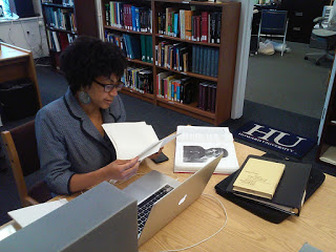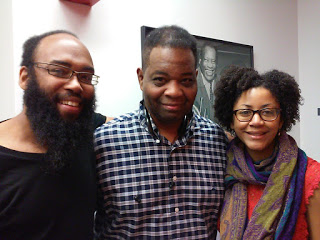Seeing this large cabinet full of documents of events we wanted to attend, people we want to know, music we want to hear - it was extremely moving for many different reasons.
Lastly, Castle of our Skins has the goal of serving as a type of model for others interested in starting an organization similar to ours, whether it focus on celebrating Black artistry through music or celebrating the artistry of another culture through painting. Our mission, while focused, is inclusive. It is more of a critique rather than a filter. Today, despite the overwhelming number of orchestral works by composers such as Gary Nash, Kevin Scott, Jeffrey Mumford, Jonathan Bailey Holland, Ed Bland, Margaret Bonds, Evan Williams, George Walker, Olly Wilson, Florence Price, Renee Baker, Tania León, Mary Watkins, and others, it's typical today to go to an orchestral concert for an entire season and not see one work programmed by a composer with brown skin. And while chamber music concerts provide a bit more of a complete cultural picture with regards to "classical music", there are numerous ensembles that are proud of the "diversity" in their program, and this only extends to women and composers from less-represented European nations. The concept of diversity in "classical music" today does not usually include composers with brown skin. In my professeional travels, I try to make it a point to ask my colleagues their general knowledge of Black composers outside of me. The answers are rather dismal. Some might say, "this is okay because composers should be associated more with nationality rather than race/skin color." I would be okay with this, but the problem then lies with the fact that Black Americans are generally not included in the fabric of "classical music". In discussions of American Composers (which usually focus on composers from the United States rather than all of the Americas), how often do you come across Julius Eastman or Blind Tom? While they are definitely American composers, the label is usually Black composer. Perhaps collections of Black music further exacerbate this separation. But then I ask myself, would this documentation exist within the fabric of "American Music" if it weren't separated? The state of Blacks in "classical music" is definitely a complicated catch-22, in which the general system of "classical music" includes unspoken expectations that conceal segregation. Castle of our Skins attempts to change the system. Hopefully a box for us will be created in some Black Music collection in the future.
Thanks, CBMR! (This is the last part of the BIBA Blog's CBMR series! We'd Like to Hear From YOU!)
0 Comments
Leave a Reply. |
Details
Writings, musings, photos, links, and videos about Black Artistry of ALL varieties!
Feel free to drop a comment or suggestion for posts! Archives
May 2024
|
Member Login
Black concert series and educational programs in Boston and beyond




 RSS Feed
RSS Feed










